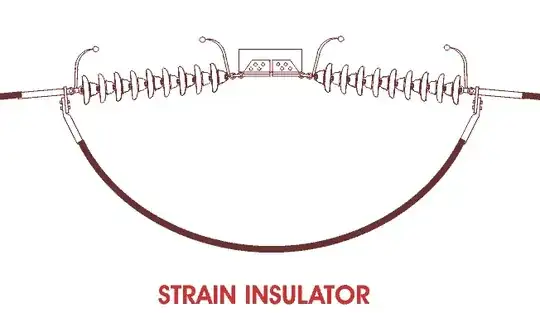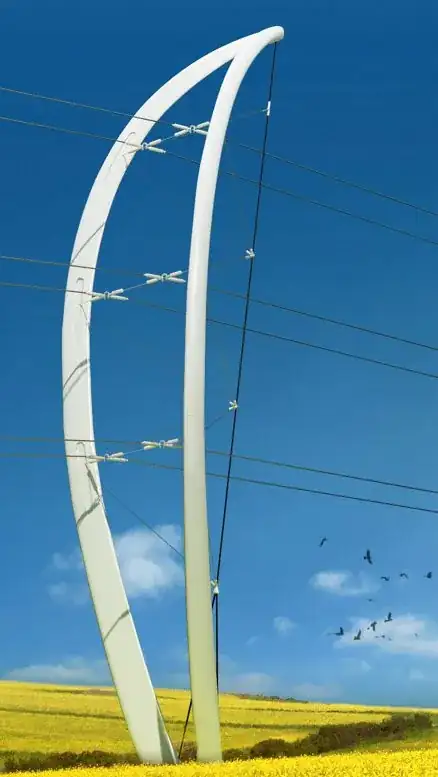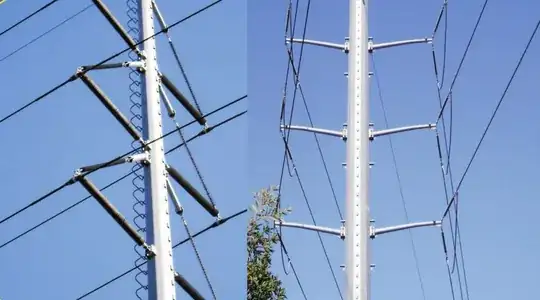When greater surface or overhead crosswind forces, deadends, or sharp corners exists, a "Strain Insulator" method is used , which cost more to install and repair.

But as far as tower design , these next ones are curious.

Below is an artist's rendering

Some of the requirements for Tower design are;
Cost of tower & installation of cables, cost of property from cone angle projection and height, mechanical and electrical properties with environment.
Tolerance to cable resonance:
- susceptibility to resonance and need for detuning, or inter-phase connections
- fixed tower connections with loop bypass bushings
- flexible suspended bushings with a sway arc angle
- fundamental, 2nd 3rd, swing
Tolerance to cross-winds
- Tower tilt tolerance 5, 10, 30 deg
- cable sway relief
- ground clearance
- tower clearance
- tower tilt resistance
Tolerance to ice accumulation and cross-winds
- ease/cost of single or array stringing power line repairs
These are more traditional









